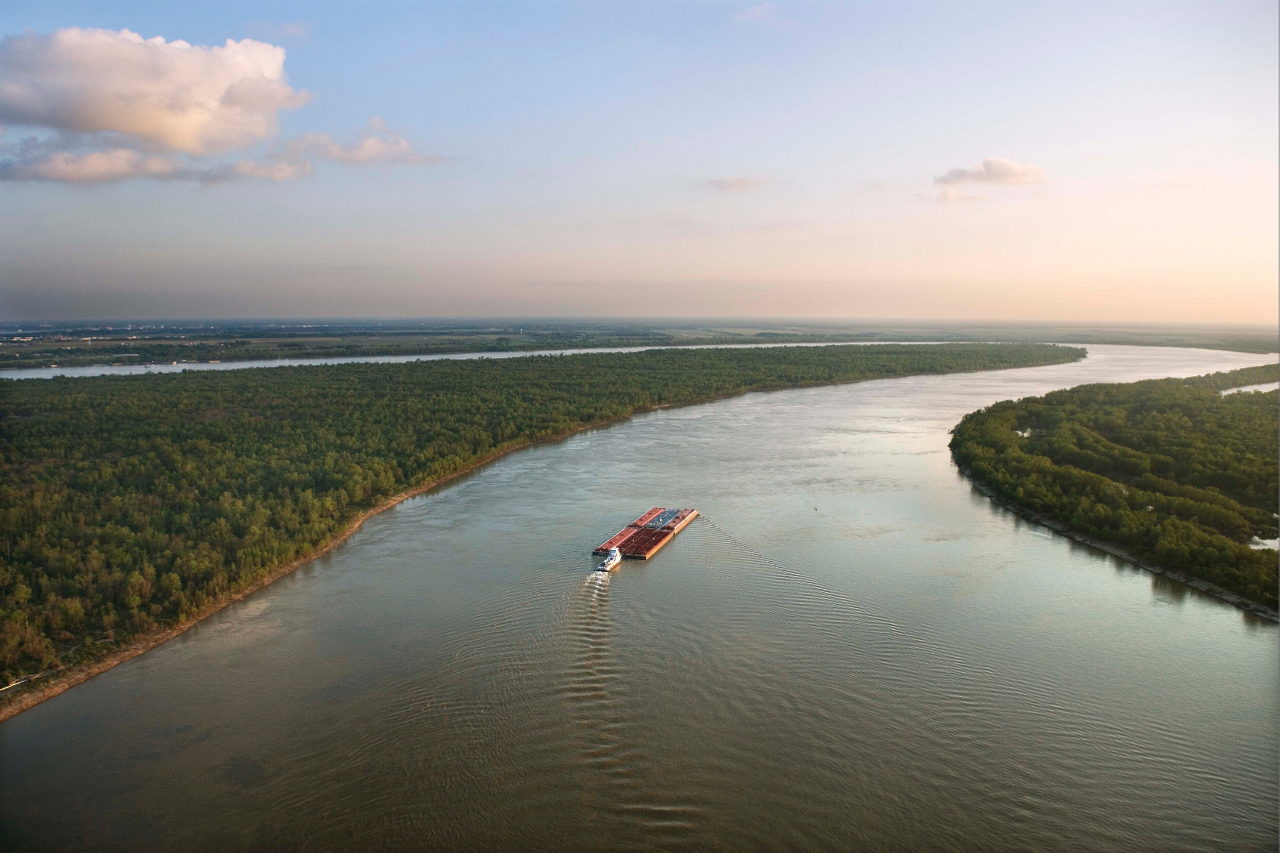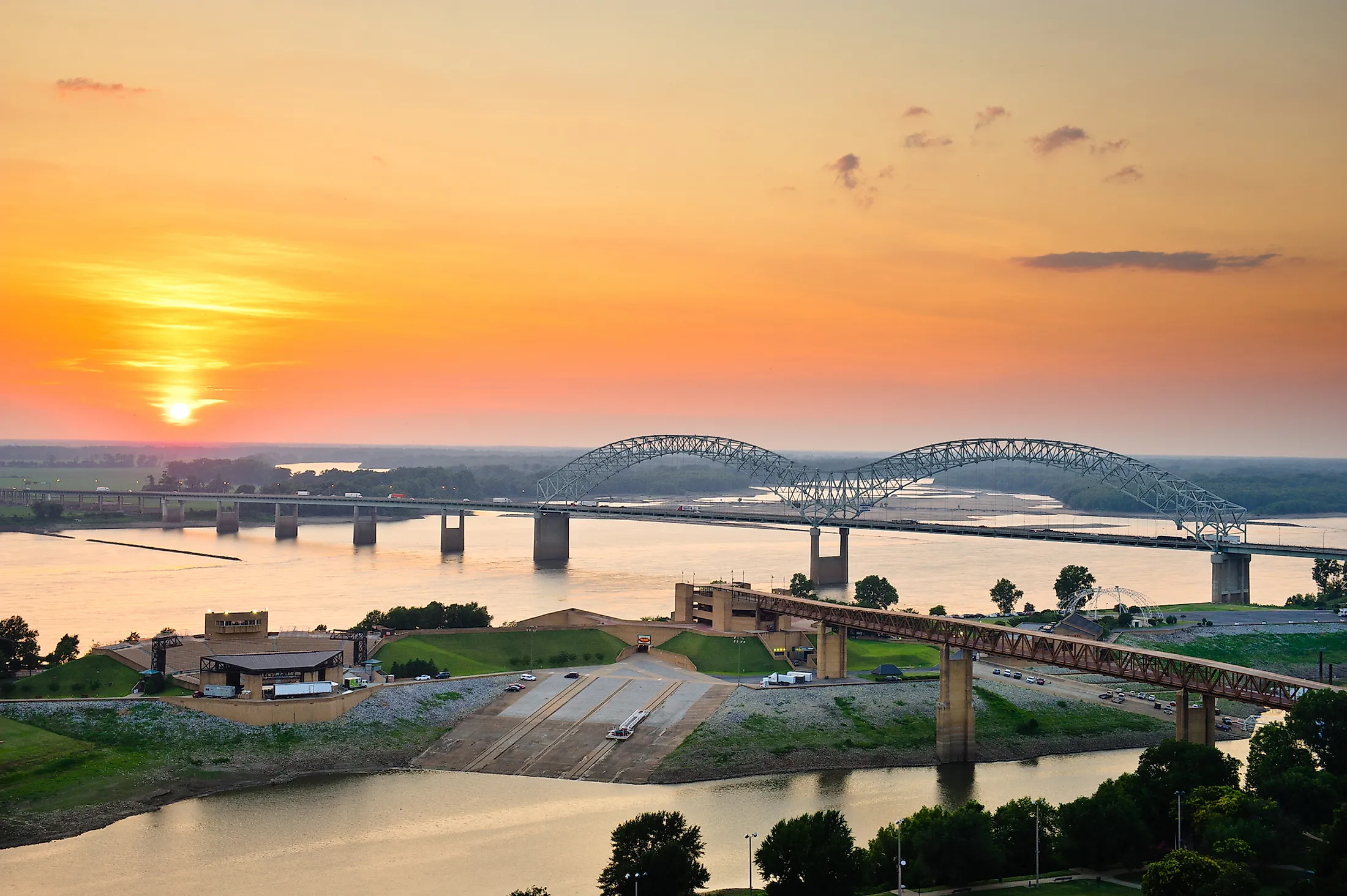Unveiling The Mystery: The Mighty Mississippi, America's Longest River?
The Mississippi River holds a storied place in the tapestry of American geography and history. From its humble beginnings in Minnesota, it meanders through the heartland of the United States, touching the lives of millions. The river's vast network of tributaries and its sheer size have sparked curiosity and debate: Is the mighty Mississippi truly the longest river in the United States? This article delves into the complexities surrounding this question, examining the factors that contribute to measuring a river's length, and exploring the significance of the Mississippi River beyond its physical dimensions.
For centuries, the Mississippi River has been an iconic symbol of America. It has served as a major transportation route, a source of sustenance, and a cultural touchstone. Yet, despite its prominence, the question of whether it is the longest river in the United States is not as straightforward as it seems. Rivers are dynamic systems, with lengths that can be influenced by a variety of natural and human-made factors. Understanding these complexities requires a closer look at what defines a river's length and how the Mississippi compares to other major river systems.
Beyond the debate of physical length, the Mississippi River is a key player in the environmental, economic, and cultural landscapes of the United States. Its watershed supports a diverse array of ecosystems and provides vital resources for agriculture and industry. Moreover, the river has inspired countless works of literature, music, and art, cementing its place in the national consciousness. As we explore the question of the Mississippi's length, we also celebrate the broader significance of this mighty river.
Read also:Knockdown Center A Hub Of Creativity And Cultural Innovation
Table of Contents
- What Defines River Length?
- The Mississippi River System
- Measuring the Mississippi
- Is the Mississippi the Longest River in the US?
- Comparison with Other Rivers
- The Missouri River Debate
- Historical Perspectives
- Cultural Significance of the Mississippi
- Economic Impact
- Environmental Influence
- Biodiversity and Ecosystems
- Future Challenges
- Frequently Asked Questions
- Conclusion
What Defines River Length?
Understanding what defines a river's length is essential to unraveling the mystery of the mighty Mississippi discovering which river is the longest in the United States. River length can be measured using various criteria, which can lead to different conclusions. The primary factors include:
- Source to Mouth Distance: The direct length from the river's source to its mouth.
- Tributary Inclusion: Deciding whether to include tributaries and their lengths.
- Meandering Paths: Considering the natural curves and bends of the river.
- Human Alterations: Man-made diversions and dams affecting river flow.
Each of these factors can significantly impact the reported length of a river. It's not uncommon for different sources to provide varying measurements for the same river due to differences in methodology and criteria.
The Mississippi River System
The Mississippi River system is one of the most extensive river networks in the world. Spanning over 2,300 miles from its source at Lake Itasca in Minnesota to its mouth in the Gulf of Mexico, it traverses ten states and collects water from over 30 states through its tributaries. Key tributaries include the Missouri River, Ohio River, and Arkansas River, among others.
This complex system plays a crucial role in the hydrology of the central United States. It drains approximately 41% of the continental U.S., supporting a vast array of ecosystems and providing resources for agriculture and industry. The river's watershed is home to millions of people and countless species of plants and animals.
Measuring the Mississippi
Measuring the Mississippi River involves more than simply determining its source and mouth. The river's length is often reported as 2,340 miles, but this figure can vary depending on the inclusion of certain tributaries and the methods used to trace its path. The Missouri River, a significant tributary, complicates matters by contributing to the overall length of the Mississippi River system.
Advancements in technology, such as satellite imagery and GPS, have improved our ability to measure river lengths accurately. However, even with these tools, the inherent variability of natural systems means that exact measurements can still be elusive.
Read also:History And Impact Of Rosey Wrestler In The Wrestling World
Is the Mississippi the Longest River in the US?
The question of whether the Mississippi is the longest river in the United States is a topic of debate among geographers and hydrologists. While the Mississippi River alone is often cited as the second-longest river in North America, when combined with the Missouri River, it forms the longest river system in the United States.
This distinction is important because the combined length of the Mississippi-Missouri system surpasses that of other major rivers, such as the Yukon and Colorado. The decision to consider the Missouri River as part of the Mississippi River system is a key factor in this determination.
Comparison with Other Rivers
Comparing the Mississippi River to other major rivers in the United States provides additional context for understanding its length. Key comparisons include:
- Missouri River: At approximately 2,341 miles, it is the longest river in North America when measured independently.
- Yukon River: Stretching over 1,980 miles, it is the third longest river in the United States.
- Rio Grande: Spanning around 1,896 miles, it ranks as the fourth longest river.
These comparisons highlight the significance of the Mississippi-Missouri system in the context of North American river systems. Understanding these distinctions is crucial for appreciating the complexity of measuring river lengths.
The Missouri River Debate
The debate over the Missouri River's inclusion as part of the Mississippi River system is a significant aspect of determining the longest river in the United States. Some experts argue that the Missouri River should be considered separate due to its distinct source and flow path. Others contend that its contribution to the overall length of the Mississippi River system justifies its inclusion.
This debate underscores the challenges of defining river systems and highlights the need for clear criteria when measuring and comparing river lengths. Ultimately, the decision to include or exclude the Missouri River can have a substantial impact on the perceived length of the Mississippi.
Historical Perspectives
Throughout history, the Mississippi River has been an important landmark for explorers, settlers, and indigenous peoples. Early explorers, such as Hernando de Soto and Marquette and Joliet, documented their journeys along the river, contributing to its mystique and allure.
In the 19th century, the Mississippi River played a pivotal role in westward expansion and the development of the American frontier. It served as a vital transportation route for goods and people, helping to shape the economic and cultural landscape of the United States.
Cultural Significance of the Mississippi
The Mississippi River has left an indelible mark on American culture. It has inspired countless works of literature, music, and art, from Mark Twain's "Adventures of Huckleberry Finn" to the blues and jazz music of the Mississippi Delta. The river's cultural significance extends beyond its physical dimensions, influencing the identity and history of the nation.
Artists and writers have long been drawn to the Mississippi River's beauty and power, capturing its essence in their works. The river has become a symbol of freedom, adventure, and discovery, embodying the spirit of exploration and the promise of new beginnings.
Economic Impact
The Mississippi River is a vital economic artery for the United States. It supports a wide range of industries, including agriculture, transportation, and tourism. The river's fertile floodplains provide ideal conditions for farming, making it one of the most productive agricultural regions in the world.
Additionally, the Mississippi River serves as a major transportation corridor, facilitating the movement of goods and commodities throughout the central United States. The river's ports and infrastructure play a crucial role in the nation's economy, supporting trade and commerce on a global scale.
Environmental Influence
The Mississippi River has a profound impact on the environment and ecology of the central United States. Its watershed encompasses a diverse array of ecosystems, from wetlands and forests to prairies and grasslands. The river supports a wide range of plant and animal species, providing critical habitat for wildlife.
Furthermore, the Mississippi River plays a key role in regulating the region's water resources, affecting everything from water quality and availability to flood control and sediment transport. The health and sustainability of the river are closely tied to the environmental well-being of the surrounding landscape.
Biodiversity and Ecosystems
The Mississippi River is home to a rich diversity of plant and animal life. Its diverse habitats support numerous species of fish, birds, mammals, and reptiles, making it a critical area for biodiversity conservation.
Key ecosystems within the Mississippi River watershed include bottomland hardwood forests, cypress swamps, and marshes. These ecosystems provide important services, such as water filtration, carbon storage, and flood mitigation, contributing to the overall health and resilience of the river system.
Future Challenges
The Mississippi River faces a number of challenges that threaten its health and sustainability. Climate change, pollution, and habitat loss are among the most pressing issues affecting the river and its ecosystems.
Addressing these challenges requires a concerted effort from government agencies, conservation organizations, and local communities. Efforts to restore habitats, improve water quality, and mitigate the impacts of climate change are essential for ensuring the long-term viability of the Mississippi River and its invaluable resources.
Frequently Asked Questions
What is the exact length of the Mississippi River?
The Mississippi River is commonly reported as being approximately 2,340 miles long, though this figure can vary based on measurement criteria.
Is the Mississippi River longer than the Missouri River?
Individually, the Missouri River is longer than the Mississippi, stretching approximately 2,341 miles. However, when combined, the Mississippi-Missouri system is the longest river system in North America.
What role does the Mississippi River play in the US economy?
The Mississippi River is a critical economic resource, supporting agriculture, transportation, and trade. It facilitates the movement of goods and commodities and contributes to the productivity of surrounding agricultural regions.
How does the Mississippi River impact the environment?
The Mississippi River supports diverse ecosystems and provides essential services, such as water filtration and flood control. It plays a key role in regulating water resources and supporting biodiversity.
Why is the Mississippi River culturally significant?
The Mississippi River has inspired numerous works of art, literature, and music. It symbolizes freedom, adventure, and discovery, influencing American culture and identity.
What challenges does the Mississippi River face?
The Mississippi River faces challenges related to climate change, pollution, and habitat loss. Efforts to address these issues are critical for preserving the river's health and sustainability.
Conclusion
The mighty Mississippi River is more than just a geographical wonder; it is a symbol of the intricate and dynamic nature of natural systems. While the debate over whether it is the longest river in the United States continues, the Mississippi's true significance lies in its role as a lifeline for ecosystems, economies, and cultures. It serves as a reminder of the interconnectedness of nature and humanity, and the importance of preserving this vital resource for future generations. As we reflect on the question of its length, we celebrate the enduring legacy of the Mississippi River and its place in the heart of America.
Article Recommendations

